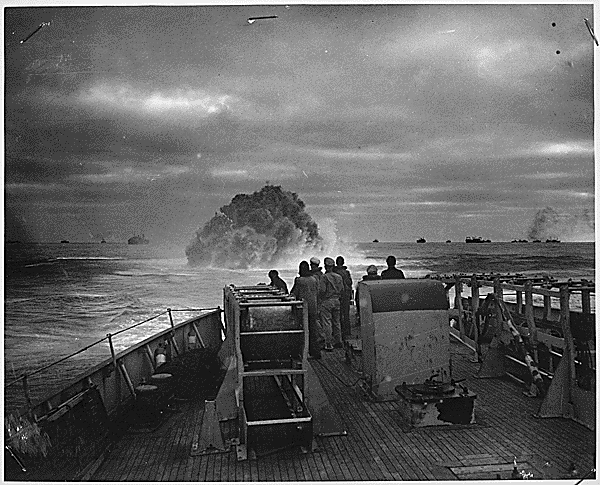Crewmen from the U.S. Coast Guard Cutter Spencer Watch the Explosion of a Depth Charge During the Sinking of U-175, April 17, 1943
Finding a U-boat was one thing, but to destroy it quite another. Once found, destroying a U-boat on the surface often meant closing to incredibly close ranges, as many escorts possessed armament too light to inflict crippling damage at long range; and lacked accurate enough fire control to effectively target a semi-submerged U-boat on wildly pitching seas. Therefore, an escort ship often sought to force the U-boat down, so as to destroy the U-boat with depth charges; a task representing a marginally easier process.
After forcing the U-boat under the sea, escort ships needed to fix the U-boat using primitive sonar - underwater radar. Knowing the U-boats approximate whereabouts meant a well-trained crew could theoretically locate a U-boat in no time. Often times however, hours passed before reacquisition, or the U-boat simply escaped. In addition, even if the escort discovered the U-boat's approximate location, the escort ship had to precisely place the depth charges needed to sink the U-boat. If a depth charge was to critically damage, sink, or force a U-boat to the surface the depth charge needed to explode within 23 feet of the U-boat's hull. Further hampering depth charge delivery was the British failure to discover, until well into the war, that U-boat's could dive much deeper than suspected. Thus, allied escorts set depth charge patterns far too shallow, the hounded U-boat simply waited out the escort ships in relative safety, well beneath the exploding depth charges. It is no exaggeration to say that sinking a submerged U-boat represented one of the most technically difficult tasks of the War
Picture Courtesy US National Archives, ARC Identifier 513166


